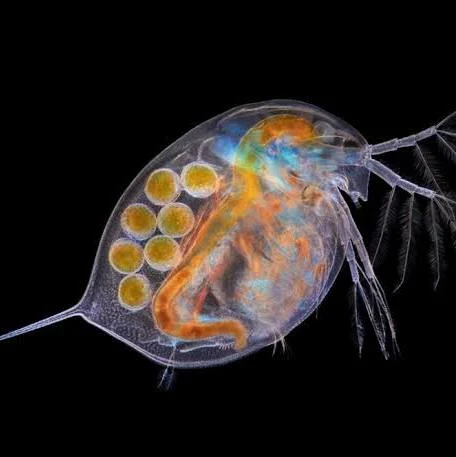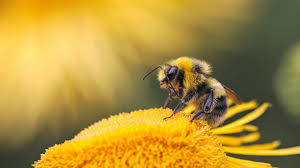Animal Reproduction (PPT)
1/52
There's no tags or description
Looks like no tags are added yet.
Name | Mastery | Learn | Test | Matching | Spaced |
|---|
No study sessions yet.
53 Terms
Asexual Reproduction
a process that creates identical cells meaning specifically they are genetically identical (mitosis)
Types: Fission, Budding, Fragmentation and regeneration
Sexual Reproduction
the reduction of the chromosome number by ½ creating cells who are genetically unique after fertilization occurs (meiosis)
Fission
an individual divides into 2 equally-sized new individuals - in protists like amoebas
Budding
new individuals “grow” off of parents (corals) or in hydra
Fragmentation and Regeneration
“sponges and sea stars”
new individuals grow when the parent is torn into pieces (lizards)
Parthenogenesis
Eggs develop without being fertilized by sperm. In Daphnia, aphids and rotifers, eggs can be produced through fertilization or parthenogenesis


Bees
Male honeybees are produced parthenogenetically
Female workers and queens develop from fertilized eggs
Hermaphroditism
each has both male and female reproductive organs. Mating still occurs between different individuals
Sequential Hermaphroditism
Individuals physiologically change sex.
Wrasses - a type of fish common to Hawaii, one male lives
with a harem of females, if he is removed or dies the
largest female becomes male. This may take as little time
as 5 days to occur. (female-to-male).
Clown Fish are the exact opposite- slightly larger female dominates a group of small
males. When removed a male changes sex and becomes dominant.
Scrotum
contains testes outside the body wall
Penis
Composed of 3 cylinders of spongy erectile tissue, erectile tissue fills with blood causing an erection
shaft of penis - covered by thick skin
Glans Penis - sensitive thinner head that is covered by a fold of skin called the prepuce which is removed upon circumcision
Urethral canal runs through the penis functions in both excretory system to eliminate urine from the bladder and in the reproductive system as a passageway for sperm to exit the body
Testes
Composed of seminiferous tubules, sperm and the male hormone testosterone are formed in the testes. Sperm form within the seminiferous tubules and mover through them as they mature
Epididymis
located on the dorsal wall of the testis it is a high coiled tube that sperm enter from the seminiferous tubules. Sperm maturation occurs in the epididymis.
Vas Deferens
Sperm enters this duct upon ejaculation. The Vas Deferens carries sperm into the urethra at the ejaculatory duct.
3 Male Reproductive Accessory Glands
Paired Seminal Vesicles
Prostate Gland
Bulbourethral Glands
Paired Seminal Vesicles
adds 60% of the total volume of semen to the ejaculate-it is alkaline, contains fructose, enzymes, ascorbic acid and prostaglandins.
Prostate Gland
Secretes prostatic fluid into the semen large, muscular gland that surrounds the base of the urethra
Bulbourethral Glands
Paired glands that lie along the urethra - they produce a clear fluid before ejaculation, this fluid can contain some sperm cells
Androgens
Testosterone is primary androgen that is responsive for primary and secondary sex characteristics in males.
Primary Sexual Charachteristics
associated directly with sexual reproduction including formation of ducts, organs and sperm during embryological development.
Secondary Sexual Characteristics
are not directly associated with sex and are usually associated with the changes that occur during puberty, including deepening of voice and the development of facial and pubic hair.
Clitoris
Erectile tissue located at anterior end of the vaginal opening
The clitoris is located at the anterior end of the vestibule, urethral opening is posterior to the clitoris and the vaginal opening is posterior to the urethral opening.
Labia Majora
2 folds of skin that surround the vaginal opening
Labia Minora
Inner folds that line the vaginal opening
Vaginal Vestibule
opening to the vagina
Ovaries
Contain the follicles
Follicle
contains 1 egg cell surrounded by several follicle cells that nourish and protect the developing egg.
one follicle matures each moth and releases and egg upon maturity.
Ovulation
the release of the mature egg from the follicle after its release tissue in the follicle continues to grow forming a corpus luteum
Corpus Luteum
secretes additional estrogen and progesterone during pregnancy
Fallopian Tube (Oviduct)
Cilia line a funnel-shaped opening that help propel the eggs into the oviduct. The oviduct provides a passageway for the egg to move into the uterus.
fertilization takes place inn the oviduct
Uterus
thick muscular organ that expands to accommodate a fetus
Endometrium
inner lining of the uterus
Cervix
tip or neck of the uterus that opens into the vaginav
vagina
thin walled chamber that provides the birth canal and the repository for sperm
Menstrual cycle
Consists of 3 phases that cause the changes that occur in the uterus to support pregnancy.
Begins as Day 1- is calculated on the first day of menstrual flow
controls changes in the uterus
If implantation does not occur during the secretory phase- the menstrual flow phase begins again.
Ovarian Cycle
controls the maturation and release of Ova.
Hormones control the maturation and release of eggs from the ovary. There are 2 main phases, the follicular phase and the luteal phase.
Hormones coordinate the menstrual cycle and the ovarian cycle so that the endometrial lining of the uterus is prepared for the possible implantation of an embryo.
Mentrual flow Phase
Endometrium lining of the uterus is shed through menstual bleeding
Proliferative Phase
Endometrium regenerated and thickens
Secretory Phase
The endometrium continues to thicken, producing glands that secrete glycogen, the uterus also becomes highly vascularized during this time to prepare for implantation of the zygote.
if implantation does not occur during the secretory phase - the menstrual flow begins again.
Follicular Phase
Several follicles in the ovary begin to grow.
The pituitary gland secretes follicle stimulating hormone (FSH) and luteinizing hormone (LH). FSH stimulates the follicles causing them to grow. The maturing follicle cells begin to secrete estrogen. LH causes ovulation to occur.
The egg cell enlarges, and follicle cells become multilayered, only one egg continues to enlarge while the rest degenerate.
Follicle sensitivity to LH increases leading to final maturation
of the egg and ovulation. Ovulation signals the end of the
follicular phase.
Luteal Phase
The LH then acts on the follicle cells left behind
turning them into the corpus luteum. The corpus luteum secretes
estrogen and progesterone to support a pregnancy.
The increased production of estrogen and progesterone inhibit
FSH and LH so that a new pregnancy cannot occur during the
current pregnancy.
Near the end of the luteal phase the corpus luteum disintegrates
and stops producing the estrogen and progesterone. The pituitary then begins to secrete FSH again stimulating follicle growth and the follicular phase begins again.
Menopause
Begins between age of 46-54
Cessation of ovulation and menstruation
Ovaries lose their responsiveness to FSH and LH
Ovaries don’t6t produce enough estrogen too keep the cycle going.
The _____________ is a highly coiled tube that sperm cells become mature in before they are transported to the vas deferens.
Epididymis
The ________________________ is the structure that produces estrogen and progesterone after an egg is released from the follicle cell.
Corpus Luteum
The _____________ is the thick muscular pouch that expands during pregnancy providing a protected ,nutrient rich environment for the fetus to develop in
Uterus
_______________________ produces offspring that are genetically unique and involves the process of meiosis that produces gametes that eventually fuse to form diploid zygotes.
Sexual Reproduction
In _____________ a type of asexual reproduction, the parent splits into 2 equal offspring.
Fission
The testes are located in the ___________________________ a pouch of skin located outside the male body.
Scrotum
A Duct from this accessory gland joins with the vas deferens to form the ejaculatory duct.
Seminal vesicles
These male reproductive structures produce testosterone.
Testes
These structures contain the follicle and follicle cells
Ovaries
In this mode of reproduction each individual organism has functional male and female reproductive organs.
Hermaphroditism
Describe the difference between the menstrual cycle and the ovarian cycle.
The menstrual cycle controls changes in the uterus, focusing on shedding of the endometrial lining. The ovarian cycle regulate the maturation and release of ova (eggs) from the ovary and is divided into 2 phases: The follicular phase and the luteal phase. Hormones coordinate these 2 cycles, preparing the lining of the uterus for implantation of an embryo.